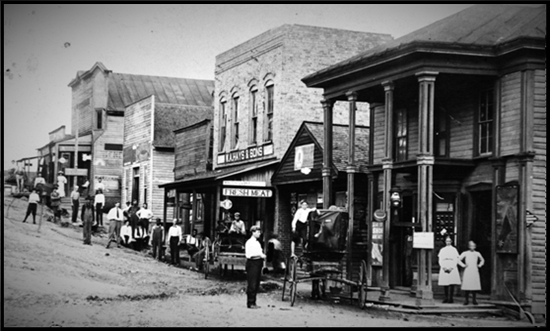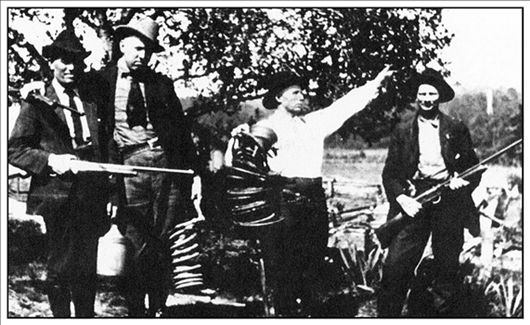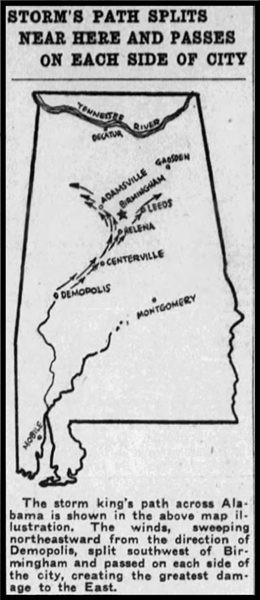|
INSERT: Essay Winners Named, Helena, Alabama, May 17, 1929 ...
Winners of the essay contest on "The History of Helena" have been
announced as follows: Miss Elba Taylor, first; Miss Ola Ruffin, second; Miss Iva Grey Flowers, third. The winner of first prize
will read her essay at commencement exercises Friday night.
The contest was conducted at Junior High School, sponsored by the P.T.A.
Shelby County Reporter
Thursday, June 6, 1929
"Prize Winning Article on The History of Helena"
By Miss Elba Taylor
(Elba Taylor Beck, 1914-1989, wife of Elmer G. Beck)
This ideally located small town in the western section of
Shelby county, Section Fifteen, Township Twenty, Range Three West, nestles among
the green hills and pleasant valleys of the Cahaba coal fields, while the limpid
waters of Buck Creek, a stream made up of mountain streams and large springs,
winds through the center and flows westward into Cahaba river a mile and a
quarter away.
The first white settlers were headed by Colonel Griffin,
who came about 1835. Among the early settlers were the Lees, Actons, Davidsons
and Roys.
The oldest church in Helena is the Presbyterian, known as
old Harmony. The first building was erected about 1850 and stood on the ground
that is now enclosed by the cemetery. A new building, the present one, was built
about 1880. The Baptist church and the Masonic Lodge built a two story building
for church below and Lodge above in 1877. The present Methodist church was built
in 1882. The Baptist built a new church in 1910.
The first school house for the public stood close beside
the Old Harmony church building, and among the old teachers were Felix
McLaughlin, Prof. Kirksey, and Ollie Cast. About 1878 Dr. F.J. Tyler got the
people interested in school, and through his efforts a school lot was donated by
J.W. Davidson, who owned at one time nearly all the land now comprising the site
of Helena. A two story building was erected by public donations, a good school,
patronized by distant as well as local patronage was the result. This school
building was burned about 1889 and a three room school house, one story, was
built about 1890. Later the town decided to build a new school house. The town
voted bonds, and we have today a modern six room, one story building and
auditorium well equipped, heated, and lighted. The school is valued at
$25,000.00. Mr. J.A. Woodward has been principal for the past four years. The
present enrollment is 261.
The springs of the surrounding community furnish plenty
of pure water, including lime, freestone, white sulphur, red sulphur, and
chalybeate, but most of the water supply for the homes comes from wells.
The old Ashville Public Road made a junction of the
Elyton and Montevallo Stage Coach Road at Helena and this was the mercantile
center before the railroad came, and Helena absorbed Hillsboro as Birmingham
absorbed Elyton.
The first railroad to come through Helena was the S & N.
A., extending from Montgomery to Decatur. It was completed so trains could get
thus far from Montgomery about 1870, and it was extended to the present location
of Birmingham during 1871.
In 1873 the Fell Brothers, Albert Charles, and Dickens,
organized the Central Iron Works. They rebuilt the rolling mill which had been
destroyed by the Yankees during the Civil War. These works changed hands and
products several times before being dismantled.
The old S. & N. A. railroad was combined with the L. & N.
railroad as it is known today; so we have the main line of the L. & N. with one
line running north through the Acton coal basin and one running south through
the Cahaba coal fields, known as the Birmingham Mineral. We also have the main
line of the A. B. & C.
While located at this point Peter Boyles, who was at the
head of the construction of the S. & N. A. met Miss Helen Lee, the beautiful
daughter of Esquire Needham Lee, and was later married to her. As the Ashville
public road was intersected at this point by the railroad, and a public grist
mill which was patronized by the surrounding community was near by, it was a
desirable place for a station, and Boyes through his influence, naturally had
the Station named Helena in honor of his sweetheart, Helen Lee.
Helena was first incorported about 1877, and the first
mayor was M.H. Williams, railroad agent at that time.
We have unlimited quantities of limestone adjoining our
eastern limits and the whole Cahaba Coal Fields, cutting through our western
limits.
The population has fluctuated somewhat, but it has never
been more than 1,500 nor fewer than 500 in the last fifty years. The present
population is around 750. There are at present approximately 100 homes in the
corporate limit and 15 business firms, including stores, garages, barber shop,
and drug store; also two secret orders - the Masons and the Odd Fellows. Each of
these orders owns its own building.
C.T. Davidson operated a town telephone system here for
several years, but financial returns would not justify; so we only have now the
long distance system. The town is well lighted by electricity furnished by the
Alabama Power Company.
Dr. Robert Hayes, Dr. Howard Hayes, and R.W. Cobb were
once residents of Helena. R.W. Cobb was elected Governor of Alabama for two
terms. All made good.
Every community consists of a group of people who occupy
a more or less definite locality. Much depends in community life, upon the
character of both the people and the locality they occupy. But the essential
thing about a community is that the people who comprise it are working together
under an organization for the common good.
If the people in our little community would cooperate,
we could do a great deal in improvements. We could improve our churces and
church property, making them much more attractive; make our homes and home
surroundings sanitary and attractive; have a “clean up day” for our town,
improving our streets, back yards, and destroy all the breeding places of
mosquitoes.
Beauty in one's surroundings adds much to the enjoyment
of life and therefore, also to one's efficiency in work and as a citizen.
Visit Helena Cemetery Census
The first official day of school for the Helena High
School was August 7, 2014.
Shelby County Newspapers, Inc. launched on April 22,
2015 two new weekly community newspapers,
the "280 Reporter" and the "Helena Reporter" newspapers.
The final issue of the "Helena Reporter" was March 27, 2022.
"Today's news in Helena is tomorrow's history - thank you Shelby County Newspapers, Inc.!"
|


